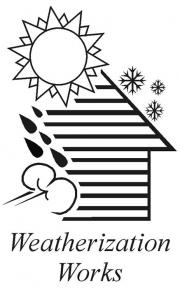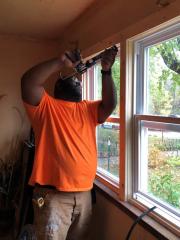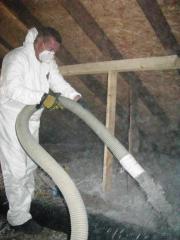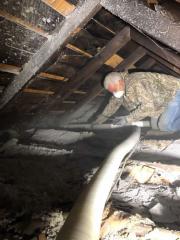
Background
In 1977, the Missouri Department of Natural Resources responded to the energy crisis of the early 1970s, establishing the Weatherization Assistance Program (WAP) in the Division of Energy. The program provides cost-effective energy-efficient home improvements to Missouri's low-income households, especially the elderly, children, those with physical disadvantages and others most affected by high utility costs. The program’s objectives are to lower utility bills and improve comfort while ensuring health and safety. The WAP takes a whole-house approach to energy efficiency. The cost-effectiveness of energy efficiency measures is considered using modeling calculations derived from home energy audits conducted by weatherization professionals. Weatherization is the nation's largest residential energy efficiency program.

Rationale for Providing WAP Services
Home heating and cooling are high-cost basic necessities. Americans spent more than $230 billion in 2010 on residential energy according to a 2010 Oak Ridge National Laboratory study. Low-income households carry a larger burden for energy costs, typically spending 16.3% of their total annual income on utilities. On average, other households spend only 3.5% of their annual income on energy costs. Low-income families often must cut back on other necessities such as health care, medicine, groceries and childcare, to pay their energy bills. Other low-income people live in older homes that may not have insulation or may have older, less efficient appliances. The WAP is a long-lasting solution to these problems.
Households that have received weatherization services are better able to pay utility bills and reduce debt. A home that has been weatherized can reduce average annual fuel usage per dwelling by 30% for the typical low-income home. Weatherization allows for a reduced burden on utility assistance providers, and the energy savings achieved through weatherization allow for the program to be cost-effective.
For every $1 invested in the program, weatherization returns:
- $1.72 in energy savings.
- $2.78 is returned in non-energy benefits to ratepayers, households and communities through:
- Increased occupant health and safety.
- Reduction in temperature-related illnesses.
- Fewer missed days of work and school.
- Increased local employment.
- Skilled workforce to support the growth of the private home energy retrofit industry.
- Local and regional businesses supported by the activities of the WAP.
- Reduced uncollectible utility bills.
Program Accomplishments
- Since 1977, more than 193,000 Missouri homes have been weatherized through the WAP.
- Weatherization saves, on average, $370 per house in heating and cooling costs, annually, at current prices.
- First-year savings from weatherized homes, each year, are the equivalent of nearly 400,000 barrels of oil.

Determining Energy-Efficient Measures
The program uses an energy audit procedure to establish cost-effective weatherization measures. The audit is used to calculate reductions in energy usage and takes into account factors such as changes in the thermal and heat transfer characteristics of a dwelling, appropriate weather data and economic factors, such as fuel and installation costs. Energy auditors gather information and perform diagnostic tests on each home, including blower door tests and infrared thermograghy. These tests help detect and locate air leaks and other weaknesses in the building envelope, providing opportunities to perform more cost-effective work. Heating systems are also tested for efficiency and safety, and repairs are made accordingly. Energy-efficient measures may include, reducing air infiltration, increasing insulation in walls, attics, floors and foundations, HVAC repair or replacement, LED lighting replacement, refrigerator replacement and water heater blankets.

Program Operation
The department administers funds to a network of 18 local weatherization agencies. Annual allocations to these agencies are based on the percentage of the state’s total low-income households within each weatherization agency’s service area. The agencies provide weatherization services, training and guidance to eligible applicants. The program saves applicants money and stimulates the state and local economy. The agencies use their own crews or contract the work to area businesses. Most materials and products used in the weatherization process are purchased from state and regional manufacturers. Indirectly, through an economic multiplier effect, weatherization funds are used and reused, stimulating the state’s businesses and creating jobs.
To apply for assistance, applicants should contact their local weatherization agency. The agency will ask the homeowners to complete the appropriate forms, which include income documentation to verify eligibility. Once the applicant is verified as eligible, an auditor from the agency will conduct a pre-inspection of the home to determine what steps will produce the greatest energy savings. The next step is for the agency crew of contractor to apply the energy-efficient improvements to the home. After the weatherization of the home is complete, a quality control inspector will examine the home for quality of work and completeness. The Division of Energy monitors the work of the agencies to ensure state and federal guidelines are followed.
More information is available online about Missouri's Weatherization Assistance Program.
Nothing in this document may be used to implement any enforcement action or levy any penalty unless promulgated by rule under chapter 536 or authorized by statute.
For more information
Division of Energy
1101 Riverside Drive
P.O. Box 176
Jefferson City, MO 65102-0176
United States
